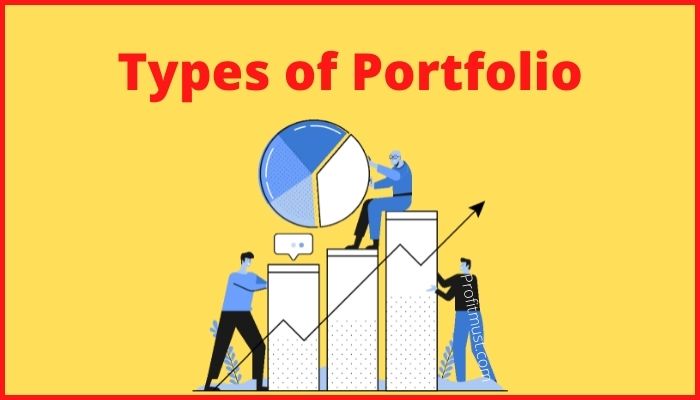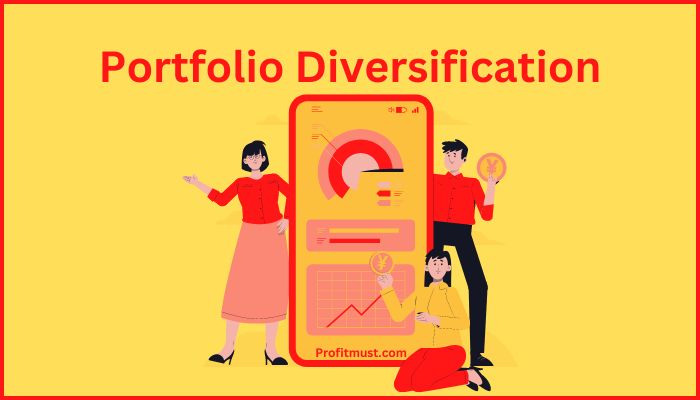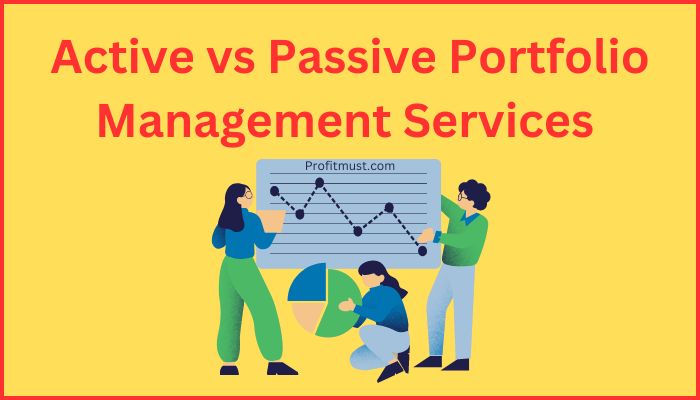Active vs. Passive Portfolio Management Services : Regarding investing, there are two main approaches, active portfolio management and passive portfolio management.
Active management involves a portfolio manager or team making investment decisions on the investor’s behalf, aiming to outperform the market.
Passive management, on the other hand, involves investing in a pre-determined index or benchmark to match the market’s performance.
Both approaches have pros and cons, and investors must carefully consider their investment goals and risk tolerance before choosing one.
Table of Contents
What is Active Portfolio Management?
A approach used by investment managers to actively choose investments with the aim of beating a given benchmark or generating better returns than the market as a whole is known as active portfolio management.
This strategy involves actively choosing and managing investments within a portfolio using in-depth market research, the manager’s experience, and active selection criteria.
An active approach to investing decision-making is typical of active portfolio management. To find investment possibilities, portfolio managers keep a close eye on and study market trends, economic conditions, company financials, and other pertinent factors.
To maximize the performance of the portfolio, they make strategic investment decisions like as purchasing and selling securities, changing asset allocations, and controlling risk.
Pros of Active Portfolio Management
Here are some Benifits of Active Portfolio Management:
- Potential for higher returns : Active portfolio managers aim to outperform the market, so investors can earn higher returns than they would with a passive strategy.
- Flexibility: Active portfolio managers can change the portfolio in response to market conditions or new information, which may result in better performance.
- Diversification : Active managers can build diversified portfolios that may offer better risk-adjusted returns than a passive strategy.
Cons of Active Portfolio Management
- Higher fees: Active management typically involves higher fees than passive management, as investors pay for the portfolio manager’s or team’s expertise.
- Higher risk: Active management can involve higher risk, as the manager makes investment decisions to outperform the market. This can result in higher volatility and potential losses.
- Inconsistency: Active managers may have periods of underperformance, which can be frustrating for investors who expect consistent returns.

What is Passive Portfolio Management?
Instead of actively choosing and managing individual investments, passive portfolio management refers to an investment approach that seeks to match the performance of a certain market index or benchmark. It entails building a portfolio of securities whose composition and weighting correspond to those of the selected index.
Instead of trying to outperform the benchmark index, passive portfolio management aims to match its returns and risk characteristics. This strategy is predicated on the idea that markets are often efficient over the long run, making it challenging for active fund managers to regularly outperform the market.
Pros of Passive Portfolio Management
- Lower fees: Passive management typically involves lower fees than active management, as investors are not paying for the expertise of a portfolio manager.
- Consistency and Predictability: The goal of passive portfolio management is to closely monitor the underlying index’s performance. This strategy stays clear of the potential problems of active management, including poor stock selection, inaccurate market timing, and emotional biases. Passive investing offers a degree of stability and predictability by following a methodical, rules-based strategy.
- Accessibility: Regardless of their level of financial expertise or experience, a wide spectrum of investors can participate in passive investing. Many brokerage platforms provide inexpensive index funds and ETFs, enabling people to begin constructing a diversified portfolio with little initial commitment.
Cons of Passive Portfolio Management
- Limited flexibility: Passive management involves investing in a pre-determined index or benchmark, which means investors cannot change the portfolio in response to market conditions or new information.
- Limited diversification: Passive management may result in less diversification than an actively managed portfolio, resulting in lower risk-adjusted returns.
- Potential for lower returns: Passive management aims to match the market’s performance, so investors may miss out on opportunities for higher returns that an actively managed portfolio may offer.

Which Approach is Right for You?
The decision between active and passive management ultimately depends on an investor’s goals and risk tolerance. Here are some factors to consider:
- Investment goals: If an investor aims to outperform the market, active management may be the better choice. Passive management may be the better choice if an investor’s goal is to match the market’s performance and earn consistent returns.
- Risk tolerance: Active management can involve higher risk and volatility, which may not be suitable for all investors. Passive management may be a better choice for investors who prioritize lower risk.
- Fees: Active management typically involves higher fees, which can affect returns. Passive management may be a better choice for investors who prioritize lower fees.
- Time and expertise: Active management requires time and expertise, which may not be feasible for all investors. Passive management may be better for investors who prefer a hands-off approach.

Conclusion
In conclusion, active and passive management have pros and cons, and there is no one-size-fits-all approach to investing.
Investors must carefully consider their goals, risk tolerance, and investment strategy before choosing an approach. Ultimately, the key to successful investing is to develop a sound investment plan and stick to it over the long term.
FAQ About Active vs. Passive Portfolio Management Services
What are the major difference between active and passive portfolio management?
The goal of active management is to outperform a particular benchmark or index, which necessitates regular buying and selling. A specific benchmark or index is replicated via passive management in order to match its performance. Portfolios with active management aim for higher returns but involve more risks and cost.
Which is better active or passive portfolio management?
Active managers may outperform more frequently than when the market is stable or the economy is strengthening. On the other hand, passive techniques could be preferable when certain market instruments are moving in synchrony or when equity valuations are more consistent.
Are passive funds better than active in India?
Funds that are managed actively and passively both seek to maximize investment returns. They actually vary in several ways. For instance, while actively managed funds could give higher short-term gains, passively managed funds offer stability and diversification.
What are portfolio management services in India?
A research team helps trained portfolio managers and stock market experts at Portfolio Management Service (PMS), a professional financial service, handle your equity portfolio.
What are the 4 types of portfolio management?
Active Portfolio Management, Passive Portfolio Management, Discretionary Portfolio Management and Non-Discretionary Portfolio Management are 4 types of portfolio management.
Who regulates PMS in India?
The Securities and Exchange Board of India (SEBI), which establishes the rules and specifications for PMS providers to operate in the nation, regulates the PMS business in India.
Is PMS better than MF?
Since managers pay better fees to entice investors, PMS distribution is lucrative but mutual fund distribution has lost appeal as a result of low costs. PMS investments allow for market timing, something MFs are unable to achieve because to their immediate investment requirements after receiving client funds.


